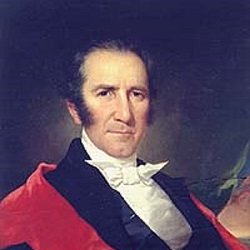Adult Life – From Political Exile to National Hero
Sam Houston, one of the most iconic figures of American history, underwent several dramatic personal and professional transformations that ultimately led to his instrumental role in Texas’ independence from Mexico.
In 1827, Houston was elected Governor of Tennessee, having previously served as a U.S. Representative for the state. His rapid political rise was largely due to his close relationship with President Andrew Jackson, who saw in Houston a kindred spirit and political ally. During his tenure, he worked hard to promote Jacksonian policies, including infrastructural improvements and protection of states’ rights.

Houston’s political trajectory, however, took an abrupt turn in 1829. His marriage to Eliza Allen ended in a scandalous and mysterious separation that tarnished his public image and led to his resignation as governor. This was a dark period for Houston, who left Tennessee and retreated into the Arkansas Territory, where he lived with the Cherokee, a tribe with whom he’d forged strong ties during his previous role as U.S. Indian agent.
While living with the Cherokee from 1829 to 1832, Houston immersed himself in their culture and traditions. He was given the Cherokee name Colonneh, meaning “the Raven” and lived with a Cherokee woman named Tiana Rogers, integrating fully into the tribe. Houston also served as the Cherokee’s legal representative in Washington D.C., advocating for their rights and negotiating treaties on their behalf.
The lure of new opportunities drew Houston to Texas in 1832, then a Mexican territory. His arrival coincided with growing tensions between American settlers, known as Texians, and the Mexican government. Houston quickly aligned himself with the Texians, earning their respect and rising to prominence within their ranks.

In 1835, as conflict with Mexico escalated, Houston was elected Major General of the Texian Army. The following year, his strategic prowess was on full display during the Battle of San Jacinto, where the Texians achieved a decisive victory against the Mexican forces. This battle, fought on April 21, 1836, effectively secured Texas’ independence and catapulted Houston into national fame.
Following the victory, Sam Houston was elected the first President of the Republic of Texas in September 1836, serving until 1838, then serving a second term from 1841 to 1844. During his presidencies, he faced the monumental task of building a new nation. He worked diligently to establish a stable government, develop the economy, maintain peace with Native American tribes, and fend off threats from Mexico.
By 1844, Houston had remarried, taking Margaret Lea of Alabama as his wife in 1840, and eventually had eight children. He had also laid the foundation for the Republic of Texas, setting the stage for its eventual annexation to the United States in 1845.

After Texas was annexed to the United States in 1845, Houston continued to play a significant role in politics, serving as a U.S. Senator from Texas from 1846 to 1859. His tenure in the Senate was notable for his steadfast opposition to the expansion of slavery, a stance that was highly controversial at the time but is now regarded as prescient and principled.
Houston also served as the Governor of Texas, elected in 1859. He found himself once again at odds with popular sentiment when he opposed Texas’ secession from the Union in 1861, resulting in his removal from office.
These transformative years saw Houston evolve from a disgraced Tennessee governor to the revered architect of a new republic and later, a Senator and Governor of Texas. Through personal turmoil and public triumph, his journey during this period is a testament to his resilience, leadership, and unyielding commitment to his vision for Texas.
